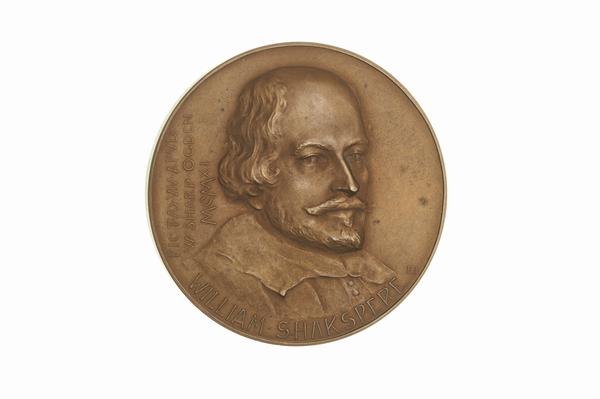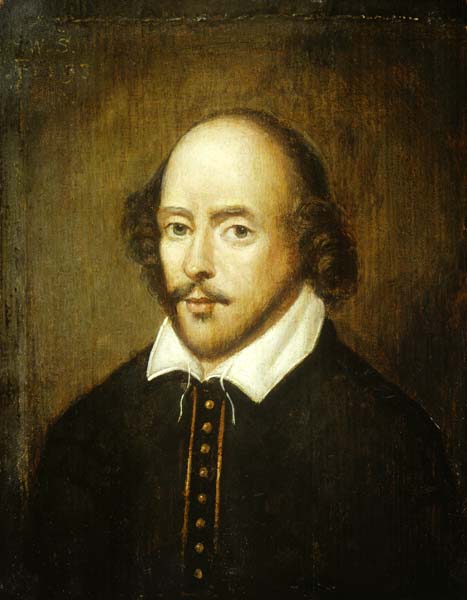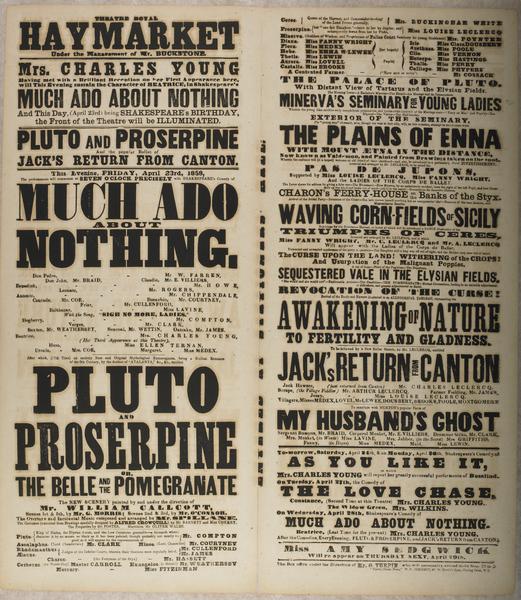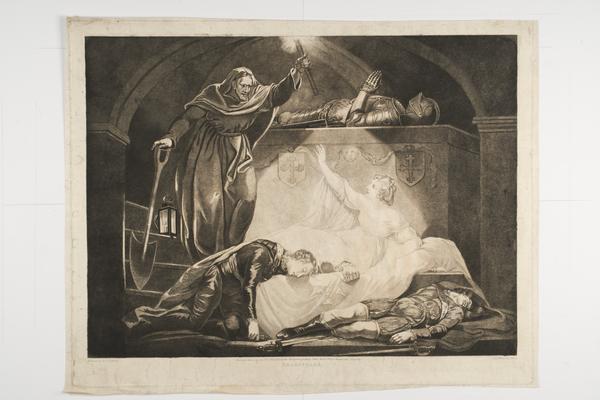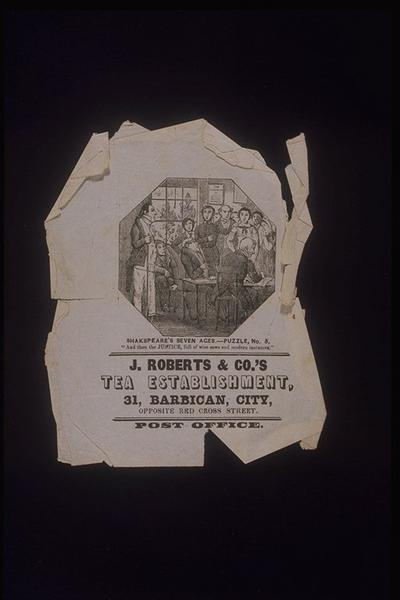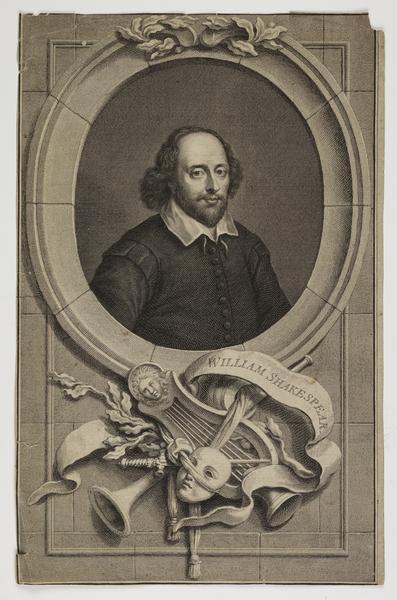The London life of William Shakespeare
One of England’s most celebrated poets and playwrights, William Shakespeare’s legacy is tied into London’s culture and history.
1564–1616
The national playwright
What would London’s theatre scene look like without William Shakespeare? His plays have been performed across the city for over 400 years, featuring notable actors like Judi Dench, Ian McKellen and Ralph Fiennes. There’s even a theatre here named after him.
While he was born in Stratford-upon-Avon in 1564, Shakespeare spent much of his life in the capital. Like with many details of his life, we don’t know exactly how long he stayed here. He also seemed to move around from lodging to lodging.
But London is where he wrote his plays, poems and sonnets. And where audiences were first immersed in his theatrical worlds.

The infant William Shakespeare nursed by Tragedy and Comedy.
Why did Shakespeare move to London?
It’s thought that Shakespeare came to London in the late 1580s or early 1590s to further his career as an actor and a playwright. In 1592, he was criticised as an “upstart crow” and “an absolute Johannes fac totum” (a ‘jack of all trades’) in a book allegedly written by fellow London playwright Robert Greene.
Shakespeare’s early plays and poems
Shakespeare’s first plays include The Taming of the Shrew, tragedies like the particularly bloody Titus Andronicus, and histories like Henry VI Part II and Part III. From 1592 to 1594, an outbreak of the plague forced London playhouses to close, so he began writing poetry.
When theatres reopened, Shakespeare joined the Lord Chamberlain’s Men (later the King’s Men) theatre company. The theatrical entrepreneur Richard Burbage was their leading actor. Shakespeare stayed with them for the rest of his career. He also developed the company’s business as a part owner.
Moving to the Globe Theatre
In 1599, the company moved from The Theatre in Shoreditch to the newly constructed Globe Theatre on the south bank of the Thames. It’s thought that Julius Caesar was Shakespeare’s first play to be performed at this outdoor venue.
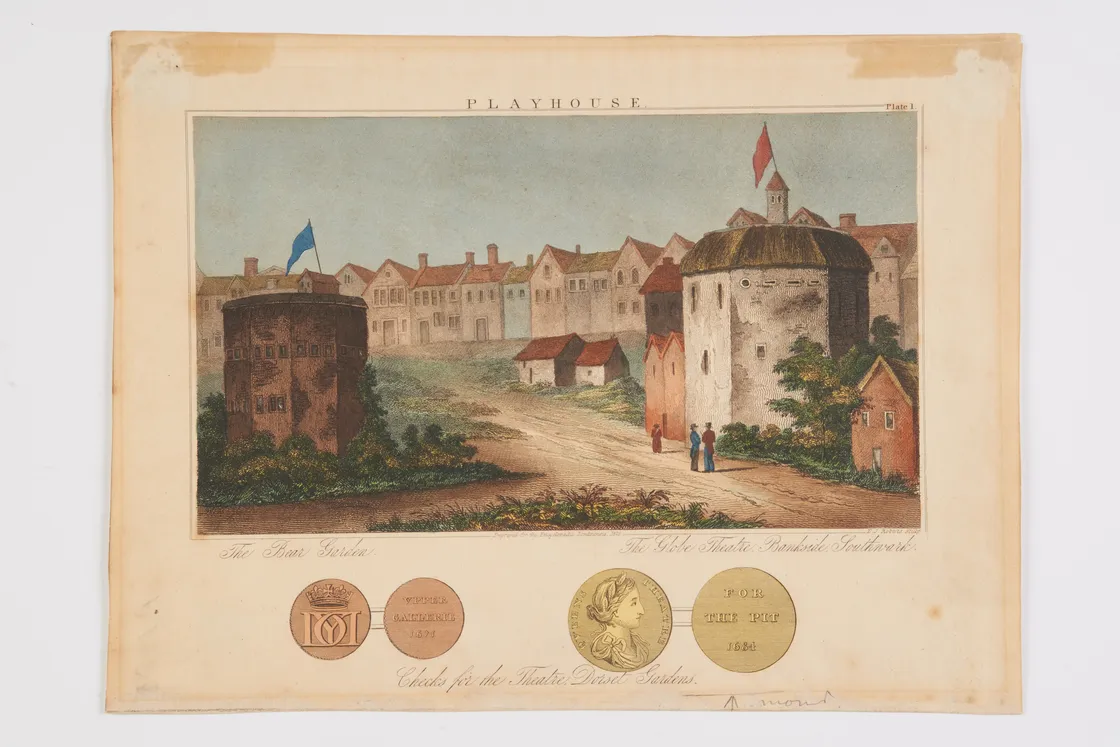
The Bear Garden and the Globe theatre.
By this time, Shakespeare had become a widely known and greatly admired dramatist. From here on, he mainly wrote tragedies including Hamlet, Othello and King Lear. After 1608, he produced tragicomedies. And his sonnets were first printed in 1609.
“Catastrophe struck the Globe”
In 1613, Shakespeare retired from playwriting. That same year, catastrophe struck the Globe when, during a performance of his play Henry VIII, a cannon set fire to the thatched roof. The building burned to the ground.
Shakespeare’s London legacy
Shakespeare died in April 1616. Seven years later, 36 of his plays were published in a book known as the First Folio. And 18 of these – including Macbeth, As You Like It and The Tempest – were printed for the first time.
His plays have been part of the fabric of London theatre ever since. Actors such as David Garrick in the 1700s and Henry Irving in the 1800s captivated London audiences and helped popularise his plays further. And you can find playbills in the collection going back to the 19th century advertising performances of As You Like It and Hamlet.
“His plays have been part of the fabric of London theatre ever since”
Shakespeare’s legacy can also be found in the variety of objects in the collection, spanning art, jewellery, theatrical and everyday items.
The Globe theatre was also reconstructed in the 1990s, one street away from its original location. Shakespeare’s Globe stands as a monument to Shakespeare and a London home for his work.
Archaeological excavations on the sites of The Theatre, Rose, Globe and other Shakespearean theatres have also revealed fascinating information about Elizabethan playgoers, performances and theatrical life.







